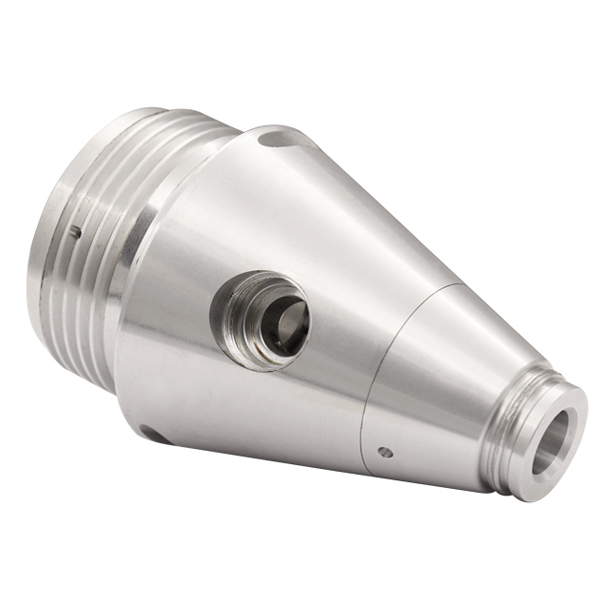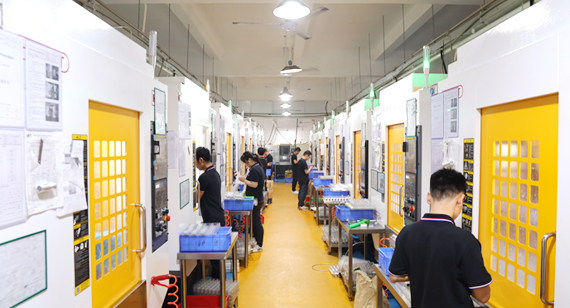Common Issues Encountered During Polishing of Aluminum CNC Machined Parts include:

Scratches and Abrasions: Polishing may highlight pre-existing scratches or create new abrasions on the surface, especially if coarse polishing techniques are applied.
Uneven Surface: Inadequate polishing or inconsistent application of polishing compounds can lead to an uneven or non-uniform surface finish on the aluminum CNC part.
Surface Contamination: Dust, debris, or residues from polishing compounds can get trapped on the surface, affecting the overall finish and requiring additional cleaning.
Over-Polishing or Burnishing: Excessive polishing or prolonged buffing in one area might cause localized overheating or excessive removal of material, resulting in burnishing or an uneven surface.
Oxidation and Staining: Improper handling after polishing can lead to rapid oxidation or staining on the aluminum surface, diminishing the achieved polish.
Residue Trapping in Crevices: Polishing compounds or residues may get lodged in intricate or hard-to-reach areas of the part, causing difficulties in removal and affecting the final appearance.
Inadequate Luster or Shine: Failure to use the correct polishing compounds or inadequate buffing can result in a lackluster finish, not achieving the desired mirror-like appearance.
Inconsistent Grain or Direction: Incorrect polishing methods can create inconsistencies in the grain or direction of the finish, impacting the overall aesthetics.
Surface Pitting: Pitting can occur when the aluminum surface is not properly prepared before polishing. This results in small depressions or craters on the surface, detracting from the overall finish.
Swirl Marks: Inconsistent buffing or improper technique can lead to the appearance of swirl marks on the aluminum surface, causing it to look less polished than desired.
Loss of Sharp Edges: Aggressive polishing techniques or excessive material removal may lead to a loss of sharp edges and fine details on the machined part.
Material Buildup: Polishing compounds and materials can build up in recessed areas, complicating the polishing process and affecting the final appearance.
Color Variations: Inconsistent or uneven polishing can lead to color variations on the aluminum surface, making it appear blotchy or discolored.
Residue Staining: Residues left from polishing compounds can stain the aluminum if not removed promptly and thoroughly, leading to a marred appearance.
It’s essential to apply the right polishing techniques, use appropriate polishing compounds, and ensure a clean and controlled environment to minimize these common problems encountered during the polishing of aluminum CNC machined parts. Regular inspection and adjustment of the polishing process can help in achieving a high-quality, consistent, and defect-free polished surface.
To address these common issues, it’s important to follow proper polishing procedures, regularly clean the part during and after the polishing process, and maintain precise control over variables like pressure, speed, and polishing compounds. Proper surface preparation before polishing is also crucial for achieving a flawless and mirror-like finish on aluminum CNC machined parts.

Polishing Solutions for Aluminum CNC Machined Parts:
Surface Scratches and Abrasions:
Use progressively finer grit sandpapers to eliminate scratches before polishing.
Employ consistent and lighter pressure while buffing to avoid new abrasions.
Uneven Surface:
Ensure even application of polishing compounds across the entire surface.
Maintain a consistent and controlled buffing motion to achieve uniformity.
Surface Contamination:
Clean the surface thoroughly before and after polishing to prevent debris or compound residues from affecting the finish.
Use clean, soft cloths to wipe the surface and remove any contaminants.
Over-Polishing or Burnishing:
Regulate the pressure and duration of buffing to prevent localized overheating.
Utilize a lighter touch and monitor the surface closely to prevent over-polishing.
Oxidation and Staining:
Apply a protective coating after polishing to shield the surface from rapid oxidation.
Store the polished parts in a controlled environment to prevent staining.
Residue Trapping in Crevices:
Utilize softer buffing materials to prevent residue buildup in hard-to-reach areas.
Employ detailing tools or brushes to remove lodged residues in intricate sections.
Inadequate Luster or Shine:
Experiment with different polishing compounds or higher-quality products to achieve the desired mirror-like finish.
Ensure the surface is meticulously cleaned to remove any residue that may dull the shine.
Inconsistent Grain or Direction:
Maintain a consistent buffing pattern to ensure a uniform grain or direction on the finished surface.
Adjust buffing techniques to avoid inconsistencies in the surface finish.
Implementing these solutions can help address and resolve various polishing issues encountered during the treatment of aluminum CNC machined parts, ensuring a high-quality, flawless, and mirror-like finish.